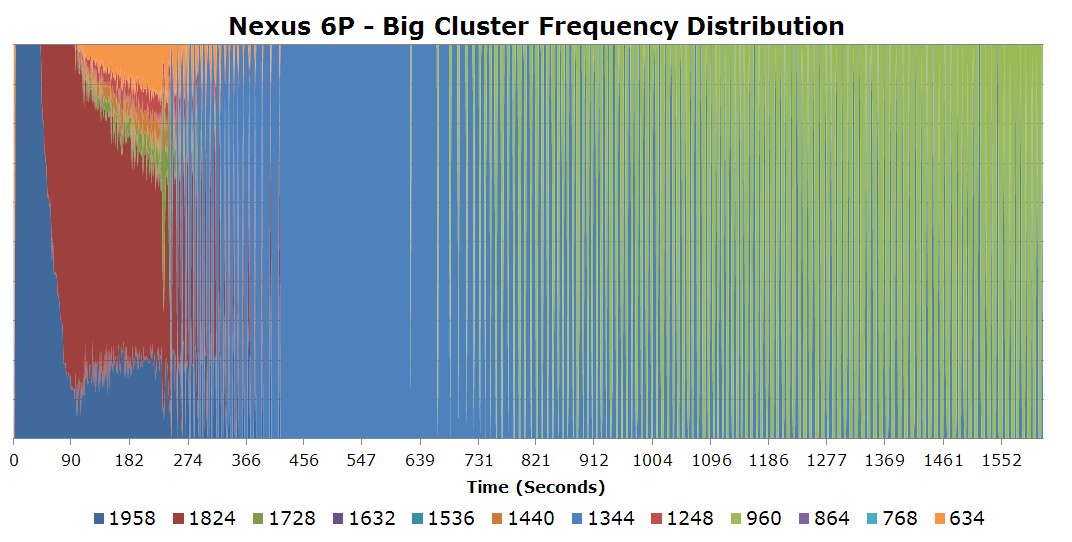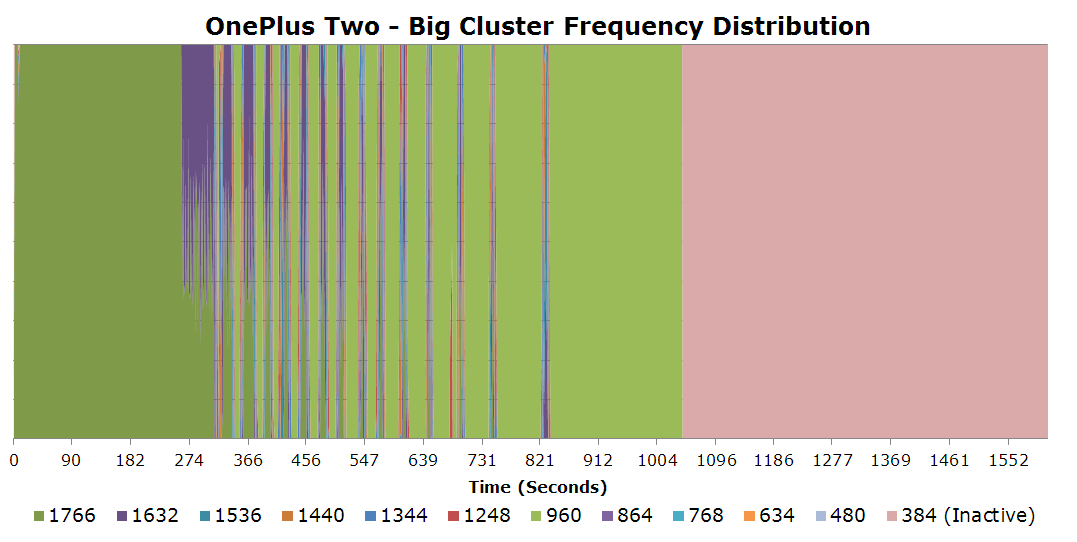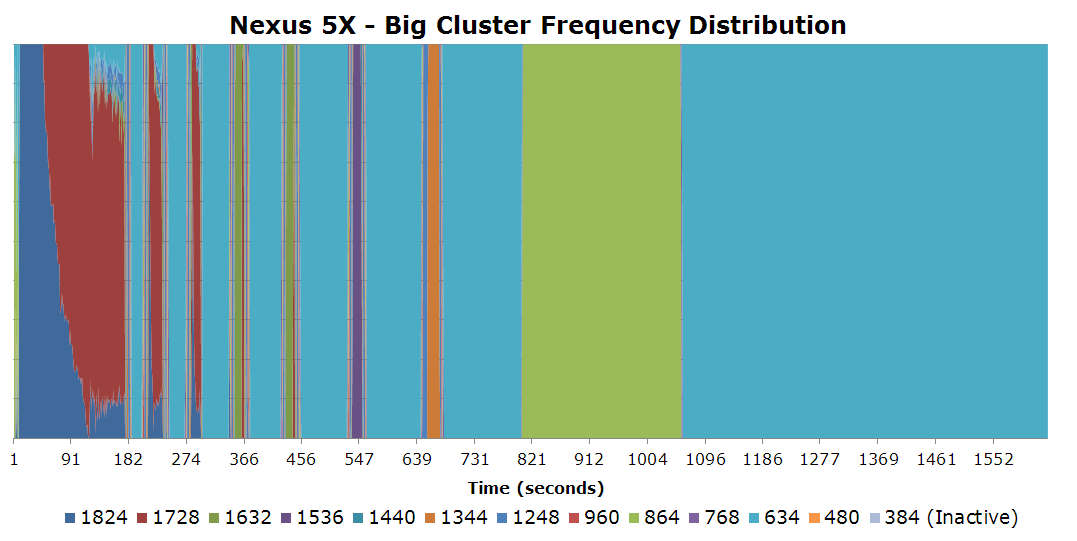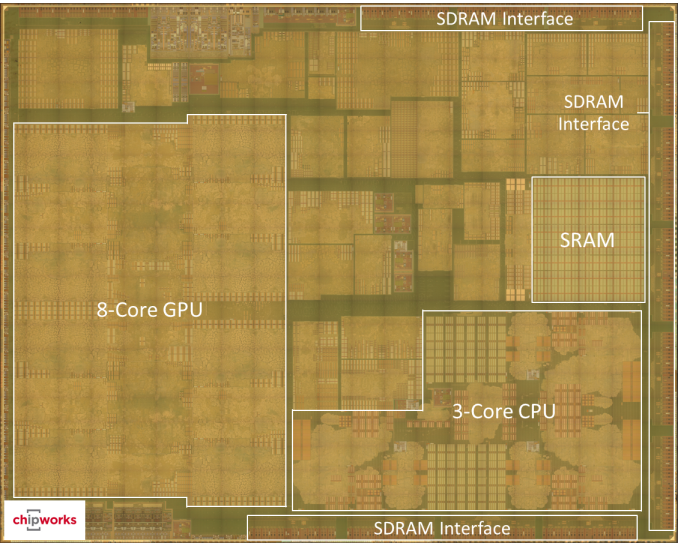LordOfChaos
Member
It's interesting to note that SoCs on high end Android phones can throttle to around or below 1GHz on the CPU:
6P (810)

Oneplus Two

5X (S808)

Granted the Snapdragon 810 was a particularly throttle happy SoC, the 820 was much better but I don't see this test done for it unfortunately, nor the TX1. And these aren't, of course, actively cooled like the Shield TV or Switch, and if they include heatsinks/heatspreaders they're tiny and phone sized.
6P (810)

Oneplus Two

5X (S808)

Granted the Snapdragon 810 was a particularly throttle happy SoC, the 820 was much better but I don't see this test done for it unfortunately, nor the TX1. And these aren't, of course, actively cooled like the Shield TV or Switch, and if they include heatsinks/heatspreaders they're tiny and phone sized.

